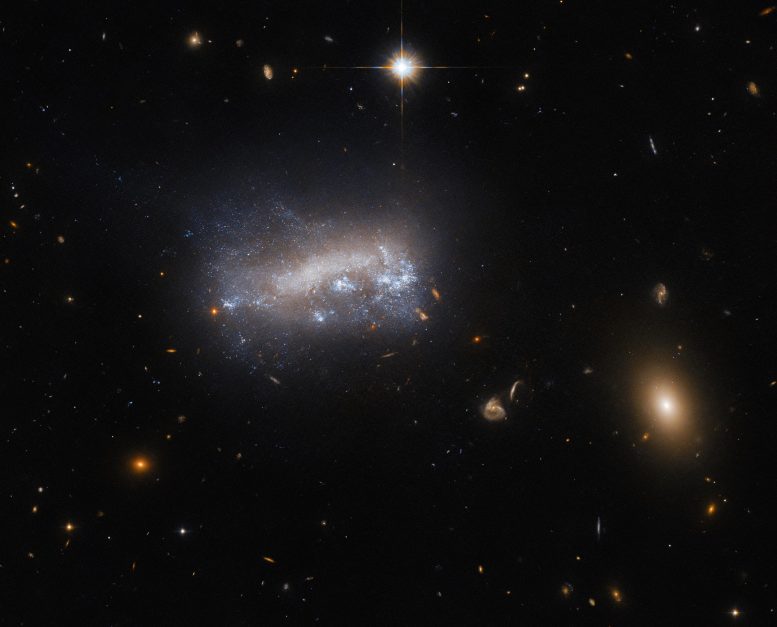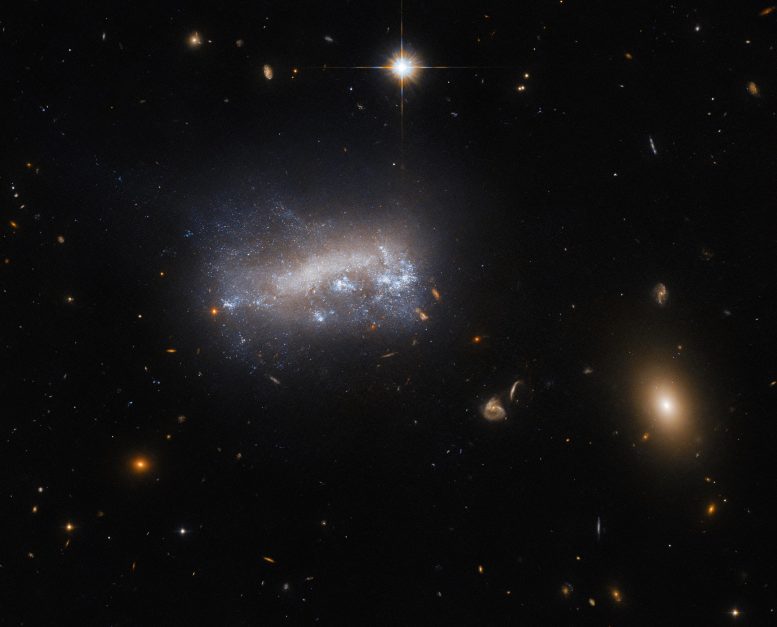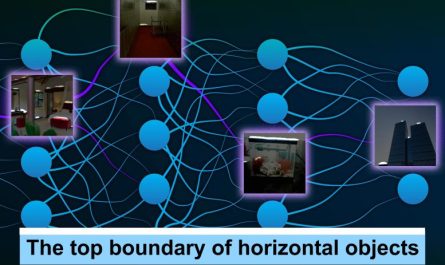

This image from the Hubble Space Telescope features LEDA 42160, a dwarf galaxy located 52 million light-years away in the Virgo constellation, part of the dense Virgo cluster of galaxies. Credit: ESA/Hubble & NASA, M. Sun
LEDA 42160, in the Virgo cluster, experiences significant star formation changes due to ram pressure. Classified as a Magellanic spiral galaxy, it showcases the nuanced categorization of galaxies beyond basic types.
This Hubble Space Telescope image shows LEDA 42160, a galaxy about 52 million light-years from Earth in the constellation Virgo. The dwarf galaxy is one of many forcing its way through the comparatively dense gas in the Virgo cluster, a massive cluster of galaxies. The pressure exerted by this intergalactic gas, known as ram pressure, has dramatic effects on star formation in LEDA 42160, which is presently being studied using the Hubble Space Telescope.
LEDA 42160 falls into the category of ‘Magellanic spiral galaxy’, or type Sm for short, under the de Vaucouleurs galaxy classification system. Magellanic spiral galaxies can be further sub-categorized as barred (SBm), unbarred (SAm), and weakly barred (SABm), where a ‘bar’ is an elongated bar-shape at a galaxy’s core.
Generally speaking, Magellanic spiral galaxies are dwarf galaxies with only one single spiral arm. They are named after their prototype, the Large Magellanic Cloud, which is an SBm galaxy. Magellanic spiral galaxies are an interesting example of how galaxy categorization is actually more nuanced than simply ‘spiral’, ‘elliptical’ or ‘irregular’.

